Nintendo 2DS vs 3DS vs 3DS XL: Battle of the handhelds
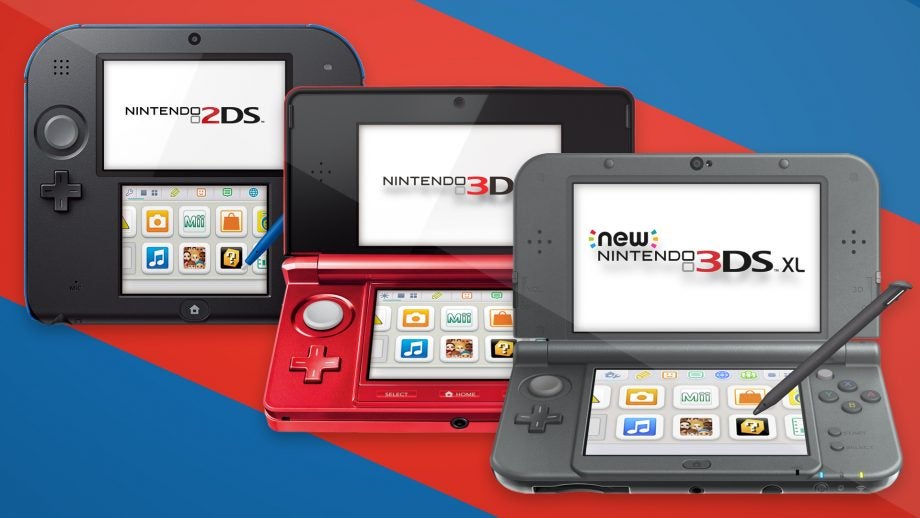
Which Nintendo 3DS should you buy?
Nintendo has released a slew of different 3DS models, each with their own unique sizes, specs and games to be considered.
Over the years Nintendo has sought to reiterate its portable device with a series of makeovers, from the XL models to the kid-friendly (and confusingly-named) 2DS to even the “New”, more powerful units. It can be pretty confusing to walk into a store and know which one to buy.
We’ve taken a quick look at all the options currently available, including the original 3DS, 3DS XL and New 3DS line of consoles. Oh, and who can forget the slate tile-inspired 2DS? Now, we also have an upgraded edition of 2DS in the form of the New 2DS XL which is coming in July 2017.
Both the New 3DS and the New 3DS have noticeable benefits over the original iterations, including enhanced 3D technology, larger screens and better processors, not to mention their additional features and small library of exclusive games.
We’ll guide you through the buying process for the 3DS family, including a few hints and tips to help decide which one would be best for you.
Related: Amazon Prime Day 2019
For a full walkthrough of all the new features, read our extensive New Nintendo 3DS vs 3DS comparison
2DS vs 3DS vs 3DS XL – Price
2DS – £99
New 3DS – £149
New 3DS XL – £179
All the above are the RRP as outlined by Nintendo, but of course retailers consistently tend to offer better deals on all the handhelds.
Despite it being over a year since the 2DS was released, the 2D console has managed to hold its price, with most retailers offering the 2DS for around the £99.99 mark or £129.99 bundled with a case and a game.
That price still means its the cheapest option on offer, but the original 3DS is repeatedly on-par.
Due to the introduction of the New 3DS and New 3DS XL, you’ll notice that you can pick up the original 3DS for £79 if you don’t mind the Ice White option. 3DS bundles tend to retain their value, with prices sticking around the £179.99 mark.
The New 3DS is available for £149.99 – although we’ve seen it for £135 at some online retailers – or £179.99 with a game. The New 3DS XL is £179.99 when bought on its own, or £209.99 with a game.
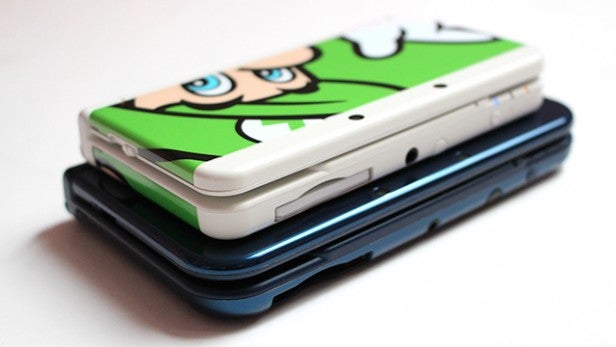
New 3DS and New 3DS XL
2DS vs 3DS vs 3DS XL – Screens
The Nintendo 2DS and 3DS have the same size screens. You get a 3.53-inch display up top and a slightly smaller 3.02-inch screen below.
However, the 2DS screens are actually part of a single, flat screen that’s split in two by the plastic screen surround of the console. It makes the 2DS cheaper and simpler to produce. This isn’t possible in the 3DS and 3DS XL because of the hinge mechanism and 3D top screen.
The Nintendo 3DS XL and New 3DS XL have much larger screens. They’re 4.88 inches and 4.18 inches respectively. Just like the previous-gen DSi XL, though, you don’t get a real increase in image quality – just image size.
The screens all use the same effective resolution – 400 x 240 pixels for the top screen and 320 x 240 for the bottom one.
However, in the 3DS and 3DS XL, the top screen has doubled this max resolution to 800 x 240 pixels in order to offer 3D.
The New 3DS has 1.2x larger screens than its original counterpart. Now you get 3.88 inches from the top screen with enhanced 3D, compared to the original’s 3.5 inches, and you get 3.33 inches from the bottom screen, up from 3 inches.
2DS vs 3DS vs 3DS XL – 3D
As their names suggest, the 3DS and 3DS XL have 3D top screens, while the 2DS has no 3D whatsoever. It’s another factor that dramatically reduces the production costs of that lower-end console.
Both the 3DS and 3DS XL have little sliders on the side of their screens, letting you choose the power of the 3DS effect. You can also turn it off completely.
The type of 3D used in these consoles is called autostereoscopic 3D. It’s a glasses-free technology that requires you keep your head still. It causes eye discomfort and headaches in some people, which is another reason for Nintendo to produce the 2DS – especially given the appeal it has for young kids.
Both the New 3DS and New 3DS XL feature new, enhanced 3D technology, which Nintendo is calling Super Stable 3D. It uses the front-facing cameras in the new consoles to track your head and eye movement, automatically adjusting the 3D effect according to what angle your head is at in relation to the 3DS screen.
We found the 3D effect much more effective in these new consoles, not only because it’s more reliable and allows you to use it when moving or on public transport, but because the colour reproduction is better compared to the 2D image.
See also: Xbox One vs PS4
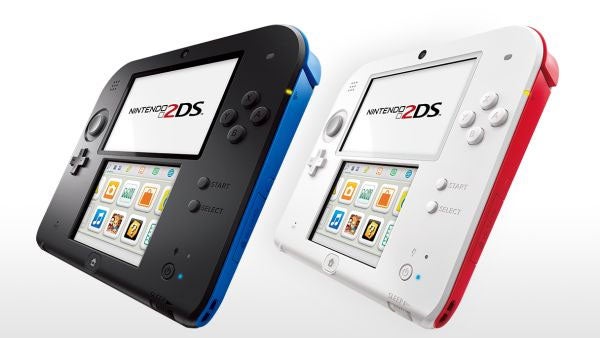
Nintendo 2DS in Black/Blue and Red/White
2DS vs 3DS vs 3DS XL – Which is the most child friendly?
There is a benefit to the flat construction of the 2DS other than keeping costs down. It makes the handheld console much less easy to destroy – the hinge of the 3DS and 3DS XL is an obvious point where they could fail.
That’s not to say that the 2DS is better constructed than its more expensive brothers, though. It feels a bit more like a children’s toy – but a rugged one that’s made of tough plastic.
Nintendo is offering a free case with any purchases of the 2DS and the larger 3DS XL, which will keep your handheld protected when chucked into a bag.
Although the 2DS is our choice for the youngest children because of its price, lack of 3D and study design, we’d still recommend any of the other consoles – just watch that hinge and overexposure to 3D.
See also: Nintendo Switch Review
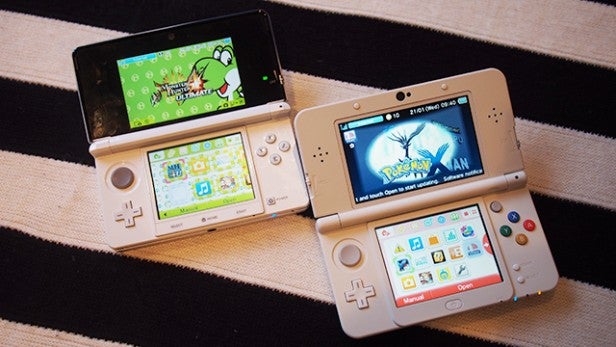
Original 3DS and New 3DS
2DS vs 3DS vs 3DS XL – Design and Portability
2DS – Width: 144mm; Height: 127mm; Depth: 20.3mm
3DS – Width: 134mm; Height: 74mm; Depth: 21mm (closed)
3DS XL – Width: 156mm; Height: 93mm; Depth: 22mm (closed)
New 3DS – Width: 142mm; Height: 80.6mm; Depth: 21.6mm (closed)
New 3DS XL – Width: 160mm; Height: 93.5mm; Depth: 21.5mm (closed)
Not having a hinge increases durability, but reduces portability in the 2DS. When closed, the 3DS and 3DS XL are both significantly smaller than the 2DS.
The 3DS is 74mm ‘high’, the 3DS XL 93mm and the 2DS 127mm. It’s much less easy to stash away in a bag and pretty much impossible to fit in most pockets. In comparison, the New 3DS is 80.6mm high and the New 3DS XL 93.5mm high, meaning they’re not much bigger than their original counterpart.
Just as important, the clamshell style protects the screens of the 3DS and 3DS XL from scratches while the consoles are in a bag – the 2DS is much more vulnerable in this respect.
The 3DS XL is the heaviest of the bunch at 336g but – perhaps surprisingly – the 3DS is the lightest. It weighs 235g, while the 2DS is 260g. The New 3DS weighs 253g, and the New 3DS XL is 329g. That means the original 3DS XL is still the heaviest.
Related: Best Nintendo Switch Games
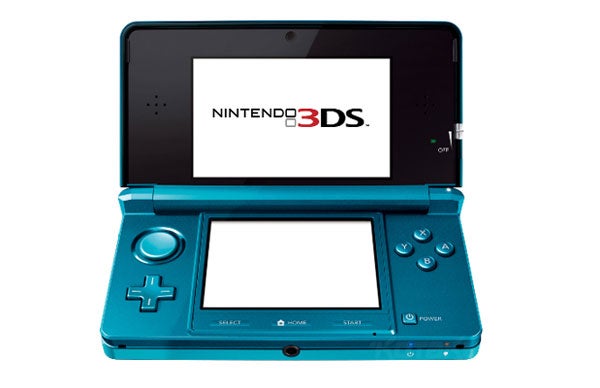
2DS vs 3DS vs 3DS XL – Battery Life
Battery stamina is different across the three consoles. The 3DS XL lasts for between 3.5 and 6.5 hours when playing games. The 3DS last for 3-5 hours and the 2DS between 3.5 and 5.5 hours. Although the 3DS is the ‘loser’ here, we also need to consider that the 3D function itself uses extra power.
Nintendo claims the two newer consoles offer a slightly longer battery life than their original counterparts, which is partly down to a new auto brightness feature. The New 3DS XL has the longest battery life at 3.5 hours with 3D turned on and 7 hours with the 3D turned off.
The New 3DS, on the other hand, offers the same 3.5 hours of 3D playtime, but only 6 hours with everything turned down.
See also: Xbox Two
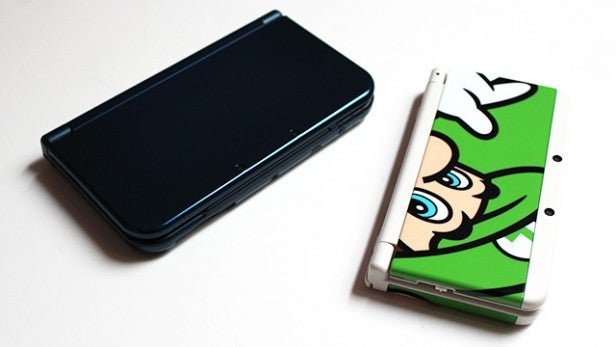
2DS vs 3DS vs 3DS XL – Games
There are no game support issues with the Nintendo 2DS – it’s only a ‘cut-down’ console in some respects. All 3DS games will work with the 2DS, and all DS games will also work with all three consoles.
How come? 3D is an optional extra in every 3DS game, and all three consoles have the same processor and the same array of sensors. Each has a motion sensor, a gyroscope and a microphone. They can all do the same thing, more or less.
However, you might want to consider the fact that the New 3DS and New 3DS XL have enhanced processors, which speed up the loading time for games, download speeds and general menu navigation.
At the moment there are only a handful of titles that currently take advantage of the enhanced processor. Some titles are exclusive, such as Xenoblade Chronicles, while others just offer improved performance.
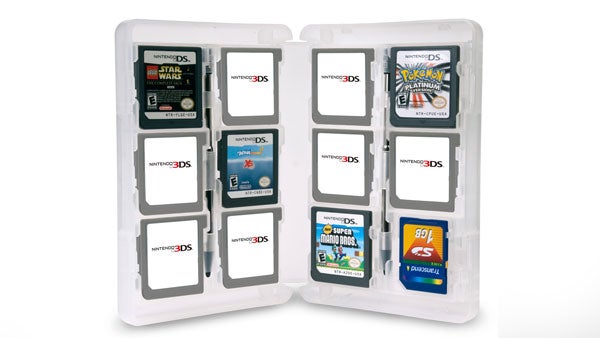
2DS vs 3DS vs 3DS XL – Sound Quality
One of the most significant differences for more discerning gamers between the handhelds is sound quality. The 3DS and 3DS XL have stereo speakers, which are quite effective as they fire directly at your ears, from each side of the screen.
The 2DS has just a single speaker, which sits to the left of the screen. It’s not a major concern if you’re going to use headphones, as the 2DS still outputs stereo through the 3.5mm jack socket. But when using that mono speaker it makes for a less immersive experience.
Although Nintendo hasn’t outlined it in the upgraded features for the New 3DS and New 3DS XL, we find that the speakers in both new consoles sound crisper and cleaner, as well as a touch louder at full volume. They might not have been improved, but the slightly larger bodies are definitely having an effect on the sound quality in these new consoles.
Verdict
For younger gamers, the 2DS seems like a sensible buy – especially if he/she isn’t going to be too concerned by the lack of 3D or buying the latest games. It’s also more fool-proof than the hinged models, as there are fewer hardware elements to break. For older and more experienced gamers who can afford the extra cash, we recommend sticking to the 3DS and 3DS XL.
But if you want the ultimate 3DS experience, you have to opt for the New 3DS or New 3DS XL. The latter is the best for larger hands, but we’d recommend the New 3DS as the best all-rounder, no matter the age of the gamer.
The enhanced 3D, new features – as outlined in our New 3DS vs 3DS feature – and slightly larger form factor make it the perfect choice.

